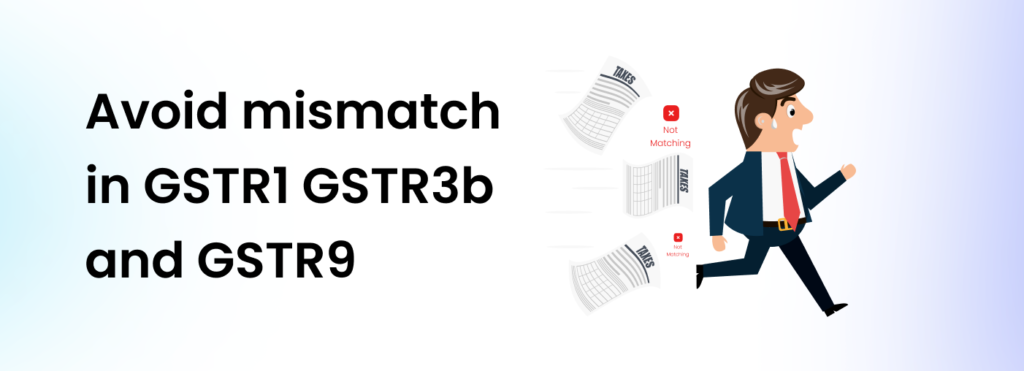It has been over two years since the implementation of the New Goods & Service Tax Regime. And the GST regime has effortlessly taken over the former VAT & Service Tax system.
The GST System has eliminated the Cascading effect or the tax on tax effect on goods & services thus decreasing the costs of Goods & Services.
The GST System has also introduced various advantageous rules & relieves such as
- The Composition Scheme for Small Businesses
- Elimination of the Cascading Effect
- Automating the Filing process online- Digitalization
- Simpler Compliance
- Improvements in Logistics
- Systematization of the unregulated Sectors such as the E-Commerce
- Input Tax Credit
In other words, the GST system was introduced to make Indirect Taxation more efficient & sophisticated both for the Business as well as for the Government. However, just like no system is perfect, the GST Regime has also faced backlash due to its not so effective implementation & the flaws in the system.
Out of the lot, the most basic issues faced by Taxpayers still remain Compliance. The former VAT system allowed the Taxpayers to rectify any errors while filing their Returns. The GST System does not provide any such facilities to the Taxpayer.
If a certain GST return is wrongly filed there is no chance the Taxpayer can modify their GST returns until the next Filing. In the meantime, the Taxpayer shall receive a notice & maybe even penalties. Hence it becomes crucial for businesses to comply with the GST System & file accurate taxes, not just for the sake of compliance but also for the Business.
A well-prepared GST return helps the Business track its growth & progress. It helps the business to learn the exact numbers of inward & outward supplies and on that basis, they can understand the cash flow cycle. An accurate GST Filing also ensures an accurate amount of Input Tax Credit claims. ITC is an indirect form of cash inflow for businesses & saves them from paying double taxes.
The Taxpayer must take the precision of the GST Return Filing into utter consideration & make sure to avoid errors, as errors in the filing cannot be rectified once submitted. But Tax filing cannot always be accurate since the filing needs to be done manually some errors may still occur. The GST Norms are complicated & the Taxpayer may miss out on something or the other, such as missing records like invoices, or wrong entering wrong GSTINs, etc.
Common mistakes to be avoided by taxpayers, during GST filing
We have identified & stated the most common mistakes taxpayers make & must avoid while filing their returns.

Do you feel as if you are making some GST mistakes while filing GST returns? No worries! There are some common GST mistakes that people make. That can be avoided with your focus and precautions. And also, as a bookkeeper, you can notice lots of errors and mistakes while you tend to manage your client’s accounting software setup.
To become a better small business owner, it’s more important to consider good bookkeeping as the best practice. Be conscious while entering data, which helps to avoid common mistakes you make.

1. Manual Data Entry Errors:
Manual data entry errors are one of the most common GST mistakes during filing & the one GST filing error that should essentially be avoided. The taxpayer must ensure the details are entered correctly & in the right format, such as the date format, non-repetition of Invoice numbers, correct invoice values & value format, correct counterparty GSTINs & Supply address, etc. The special characters must be used wisely by the taxpayer only when there is a requirement.
2. Tax Slab Compliance:
The taxpayers must ensure that the tax rates of the items are calculated as per the tax slabs given by the GSTN & the HSN summary must be calculated accordingly. Currently, there are 5 tax slabs- 0%, 5%, 12%, 18%, & 28%.
3. Non Filing of the NIL Returns:
Taxpayers usually feel that since they had no transactions for a particular tax period, they don’t need to file their GST Returns. This is a misconception, even in the case of zero transactions, businesses must file a nil return. Be more conscious to avoid these common GST mistakes.
4. Reverse Charge Mechanism:
Supplier taxpayers must thoroughly understand the reverse charge mechanism under GST before GST filing. This helps the taxpayers in a great way to avoid GST filing errors. Under reverse charge, the buyer pays the GST for purchased goods directly to the government. In normal cases, the buyer pays this tax to the supplier who then pays it to the Government.
While filing their GST Returns the supplier must understand if they fall into the RCM category & file the returns accordingly to avoid double tax payments. There may also be cases where the RCM is ignored even for eligible transactions. This type of GST filing practice is incorrect & must be avoided to eliminate common GST filing errors.
5. Confusing Zero-Rated Supply with Nil-Rated Supply:
The next common mistake is the confusion in zero-rated supplies & Nil-rated supplies. Goods & services with 0% applicable GST is Nil rated Supply, whereas, exported goods & supplies to SEZs are Zero-rated supplies. The taxpayers must categorize the supplies carefully & accordingly, to avoid GST error and to get accurate GST.
6. ITC Reversal & Credit Blockage:
As per the various amendments in the ITC laws, the ITC shall be reversed in situations like ITC on goods used for personal use, lost or destroyed goods, non-payment to the supplier within 180 days, sold capital goods, & samples, etc. Also, there are certain goods for which the Credit is blocked. Taxpayers must keep in mind the ITC laws while filing GST & claiming ITC, to avoid GST filing common errors.
7. Paying Taxes Under the Wrong GST Head:
There are GST heads such as CGST, SGST, IGST, etc. The payment of taxes under the wrong GST Head can invite trouble for the Taxpayer. The CGST’s must be paid under the CGST head only. Keep this in mind while filing GST.
8. Mismatch of Monthly/Quarterly Filing with Annual Returns:
The taxpayer must file accurate GSTR-1, GSTR-3B, & GSTR-9. The mismatch in the three GST filing reports can cause the taxpayer to receive notices. The GSTN is highly dynamic about the same & does not tolerate even the slightest mismatching of even negligible amount. Hence, the taxpayers must be highly cautious while filing these returns. This helps the taxpayers to avoid unnecessary errors and penalties.

9. E-WayBill Compliance:
The taxpayer must comply with the E-way-bill system since the GSTN has announced the reconciliation of the GSTR- 1 & E-WayBill data. Hence the taxpayer must file their accurate GSTR-1 concerning the e-WayBills & vice versa.
10. Precise ITC claim
The taxpayer must thoroughly cross-verify their auto-populated GSTR-2A, purchase books & GSTR-3B & claim the correct value of ITC. Since return once filed cannot be rectified or changed until the next filing. The delay caused due to the error can attract notices, fines & penalties. The taxpayer must keep in mind to claim only the accurate value of ITC in their filing to avoid concussions. That is, the taxpayer must know, how to claim an input tax credit in GST
To conclude, it is advisable for the taxpayer that they must take their time & file accurate GST returns, track the exact business progress & comply with the GST system to dodge notices, scrutiny, late fees, fines & penalties.
GSTR Filings can be done accurately using APIs & Integrations of the billing systems with software solution providers such as GSTHero Software Solutions.
FAQ’s
What happens if you file the wrong GST?
You must have an accurate GST. If there are any GST errors or wrong GST, the respective authority will issue an order to the concerned individual to pay the payment due, with the penalty. The individual need to pay the charge collected as GST and also pay the interest for the late payment. The interest duration will be estimated from the date of tax collection till the payment date.
Can the GST return be revised?
GST returns can’t be revised in the current GST filing system. The GST mistake made on a GST return can be fixed in the succeeding return when such an error comes to notice.
How do I correct a wrong ITC claim?
If the ITC is claimed wrongly, then the ITC claim has to be reversed by completing the payment to that next month period.
How do rectify mistakes in GSTR-1?
To revise GSTR 1: If a return is filed under GST it cannot be revised. If any mistake is made in the return can be fixed in the GSTR-1 filed for the following time (month/quarter). That is, if there is a mistake on GSTR 1 for JAN 2022, rectification for the identical can be assembled in the GSTR-1 for FEB 2022 or succeeding months.
How do I fix the wrong GSTR 3B filed?
Once GSTR 3B is filed, it is impossible to modify. At present, the government has permitted to ‘Reset GSTR 3B‘ via which the status – ‘Submitted’ can be modified to ‘Yet to be Filed’ and all the particulars filled in the GST return will be available for editing.





